1
How big are great blue herons?
Standing at 91–137 cm with a wingspan of 167–201 cm great blue herons only weigh between 1.82–3.6 kg.
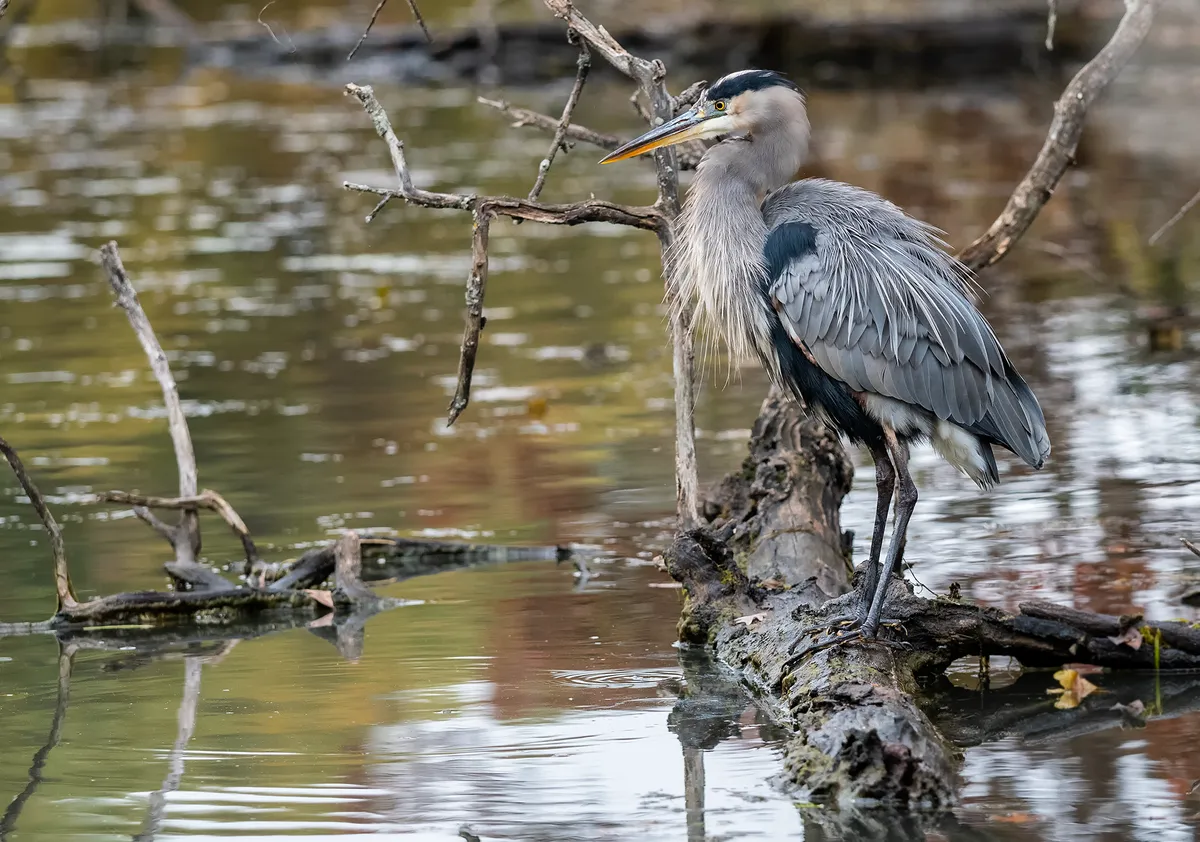
2
What are great blue herons related to?
The great blue heron is very closely related to the grey heron. The grey heron has similar plumage but has a gray neck and lacks the brown flanks of the great blue heron. The gray heron is also a smaller bird weighing between 1.02–2.08 kg.
3
What do great blue herons eat?
Great blue herons will eat almost anything within striking distance of their long beak. While fish makes up a majority of their diet, these birds stalk everything from insects to small mammals.
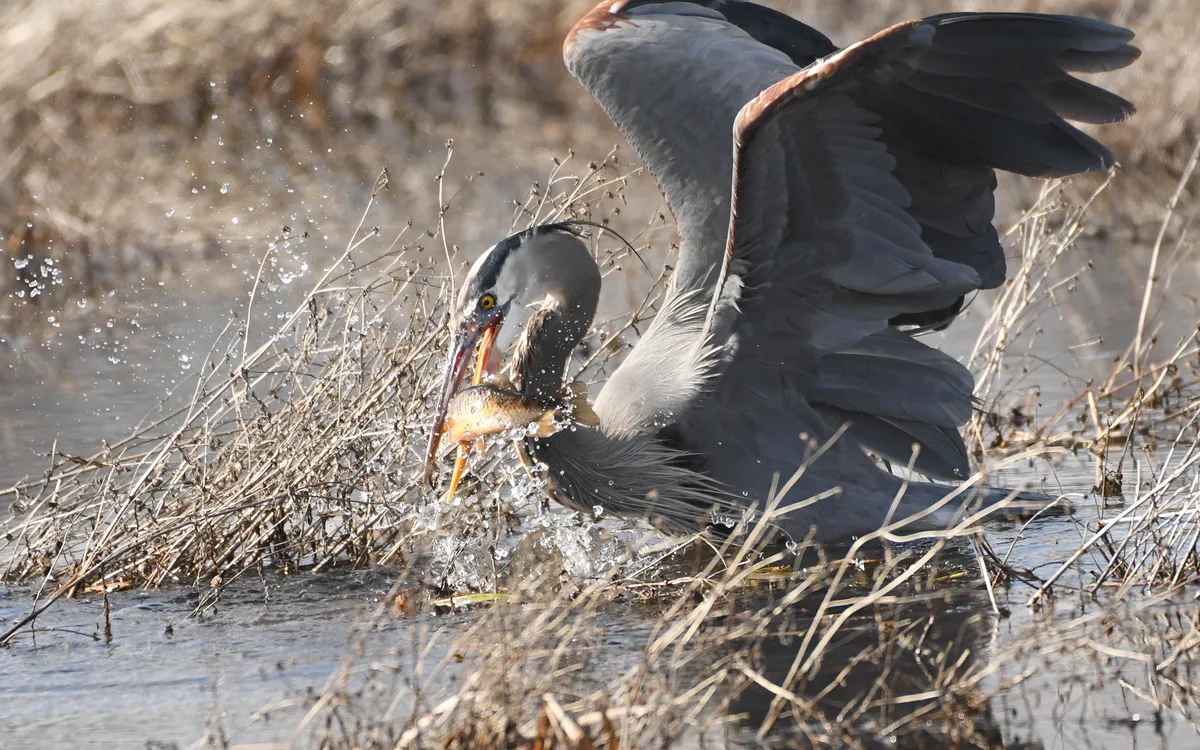
4
How do great blue herons catch their prey?
Great blue herons are excellent fishers. These birds can be spotted around shorelines and in shallow marshes, either slowly wading through the water or waiting patiently for their prey.
Once their next meal is spotted, they will stretch out their long neck and freeze in place. When the moment is right, they strike with their blade-like bill.
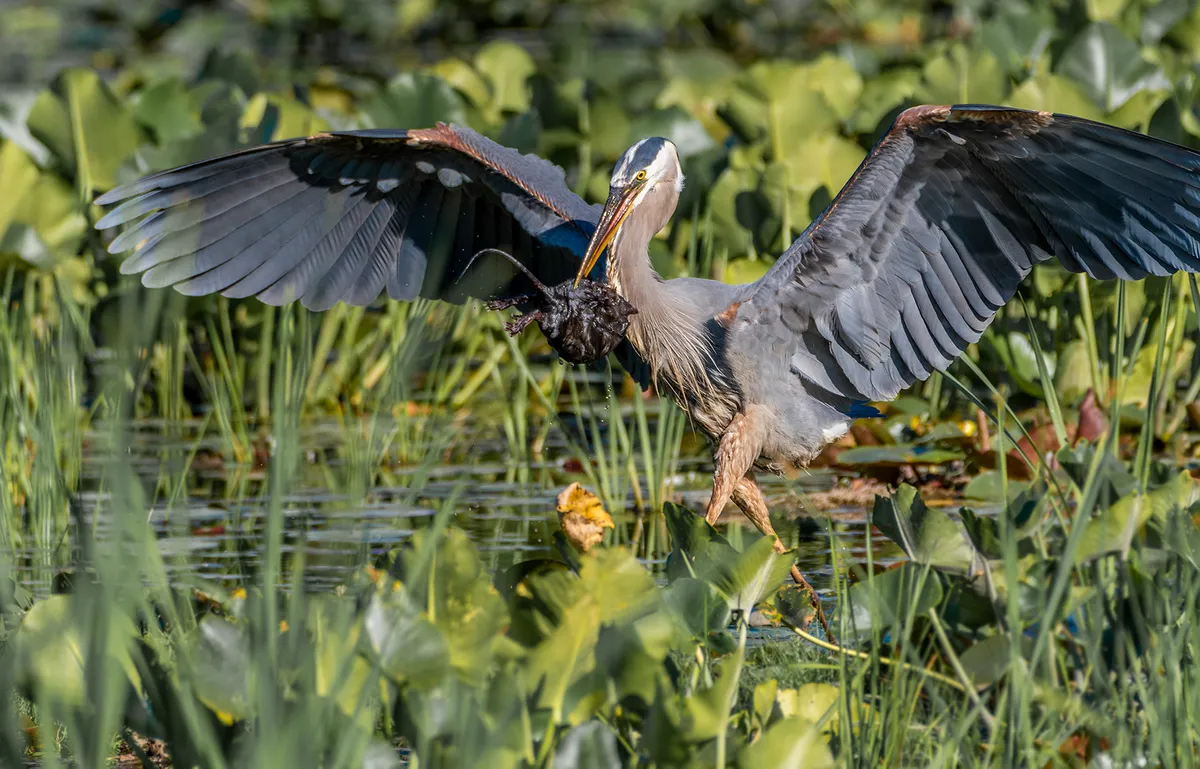
5
Where do great blue herons live?
These birds can survive and be found in almost any wetland habitat in North America. They are rarely found far from water. Gray herons can be found in similar habitats, but have also adapted to nesting in cities where space is available.
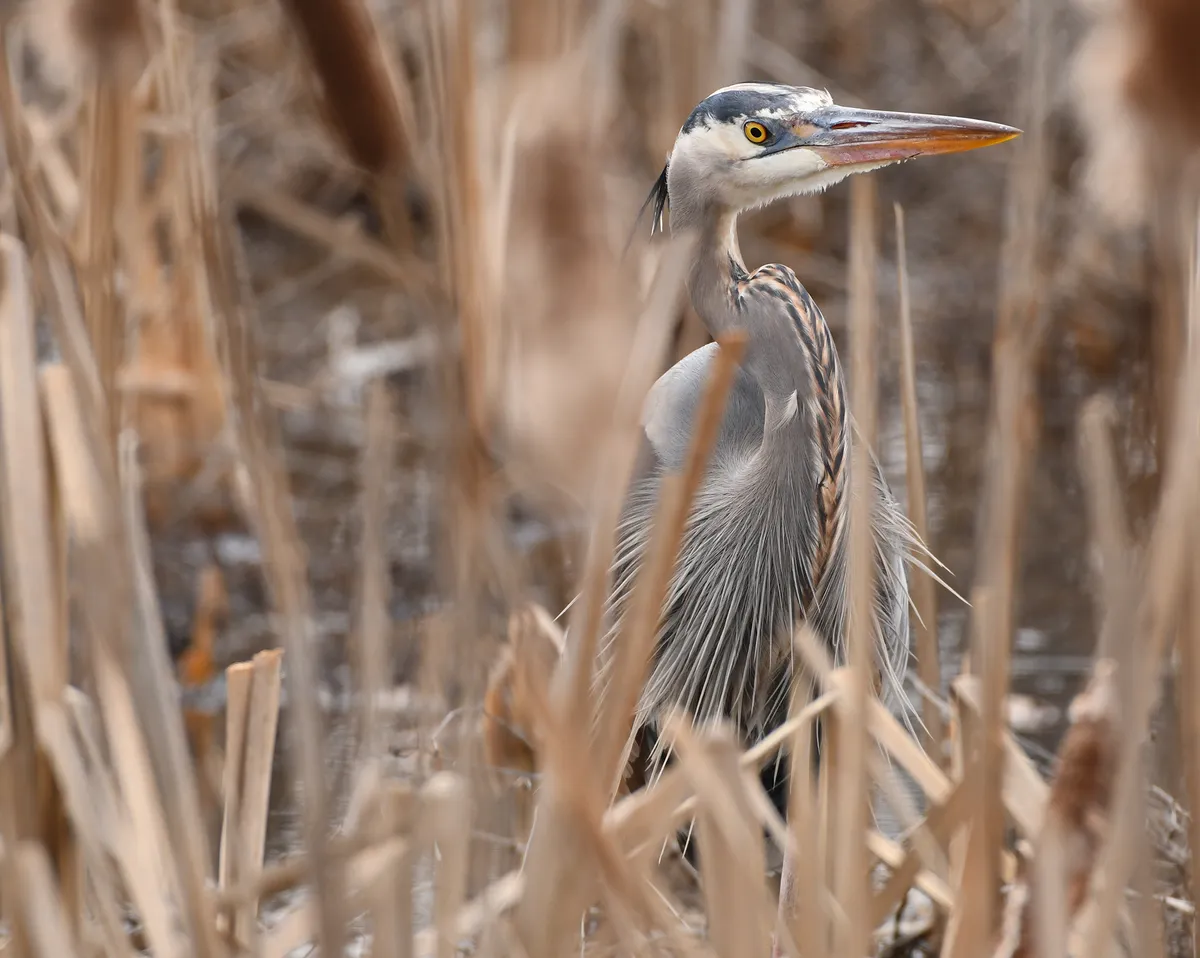
6
Where do great blue herons nest?
While some nests are built on the ground near a water’s edge, great blue herons mostly nest in colonies in trees near water. These colonies are called “heronries.” These nests can be 100 or more feet off the ground and can range from five to 500 nests per colony.
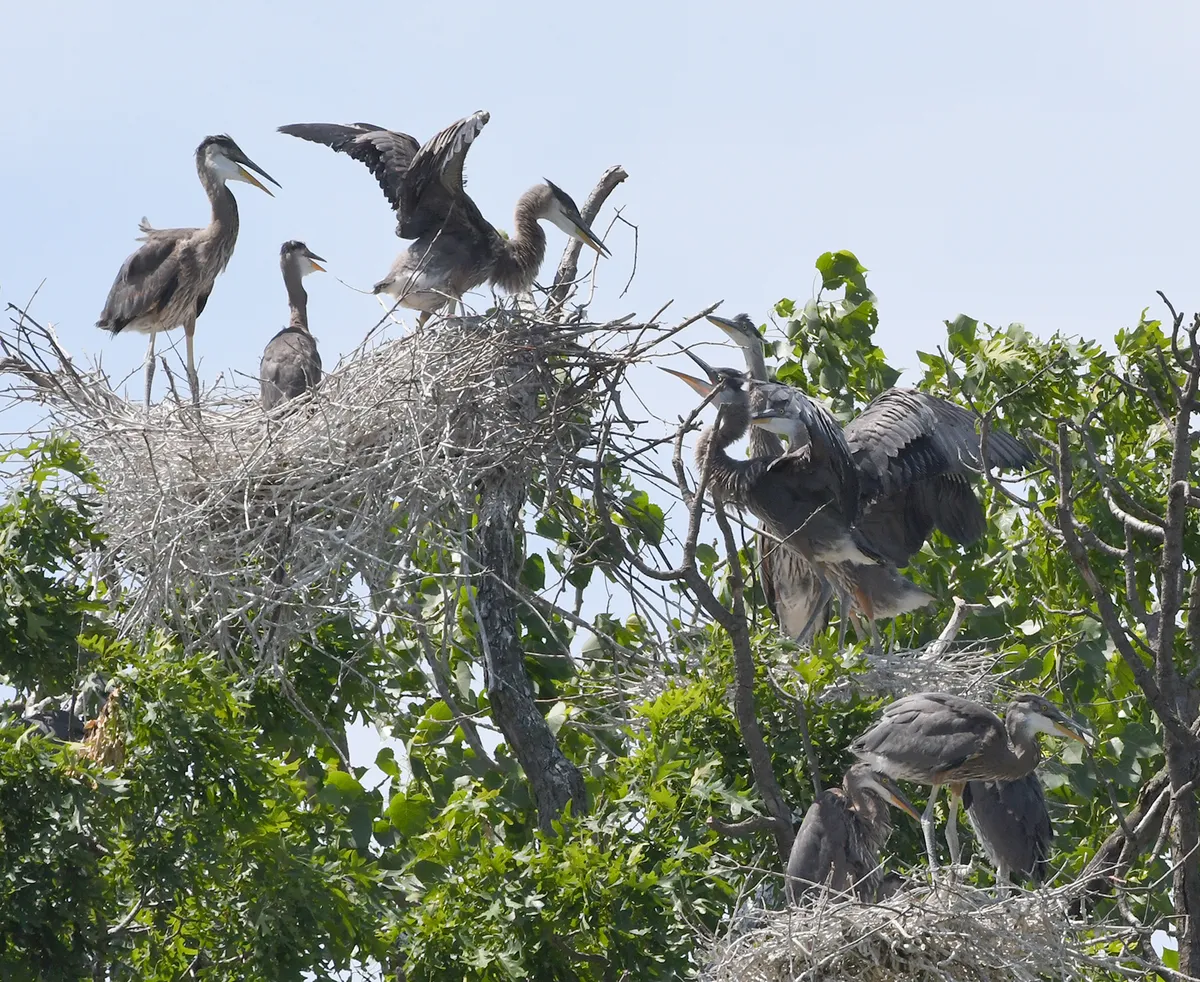
7
How do great blue herons stay clean after eating?
Great blue herons have specialised feathers on their chest that will grow continuously and fray into a powder. This powder can be used to help clean off fish slime.
8
How do great blue herons fly?
These birds fly with their neck tucked against their body in a “S” shape. Herons are sometimes mislabelled as “cranes,” which fly with their necks outstretched.

9
Do great blue herons have different breeding plumage?
During breeding season, the lore of the great blue heron will turn a bright blue, the iris will turn reddish, and the yellow bill will take on an orange hue.
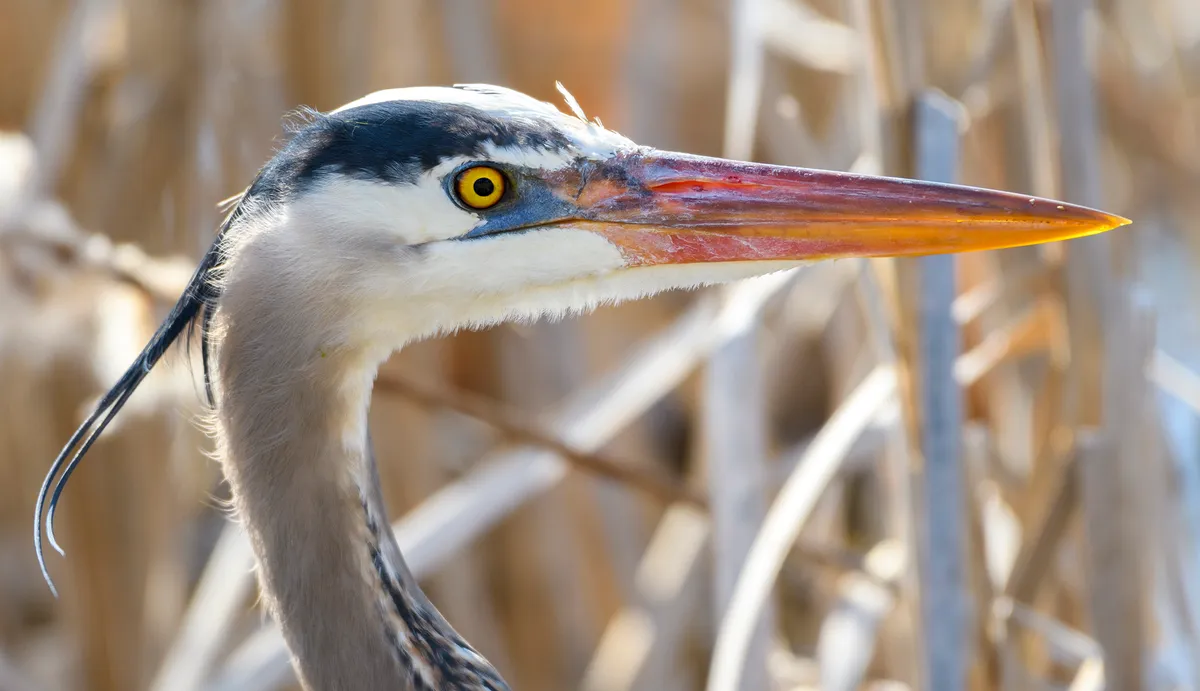
10
How do great blue herons breed?
Both parents help with incubating the eggs (incubation takes about 4 weeks) and with taking care of the nestlings. Young herons will fledge at around two months.
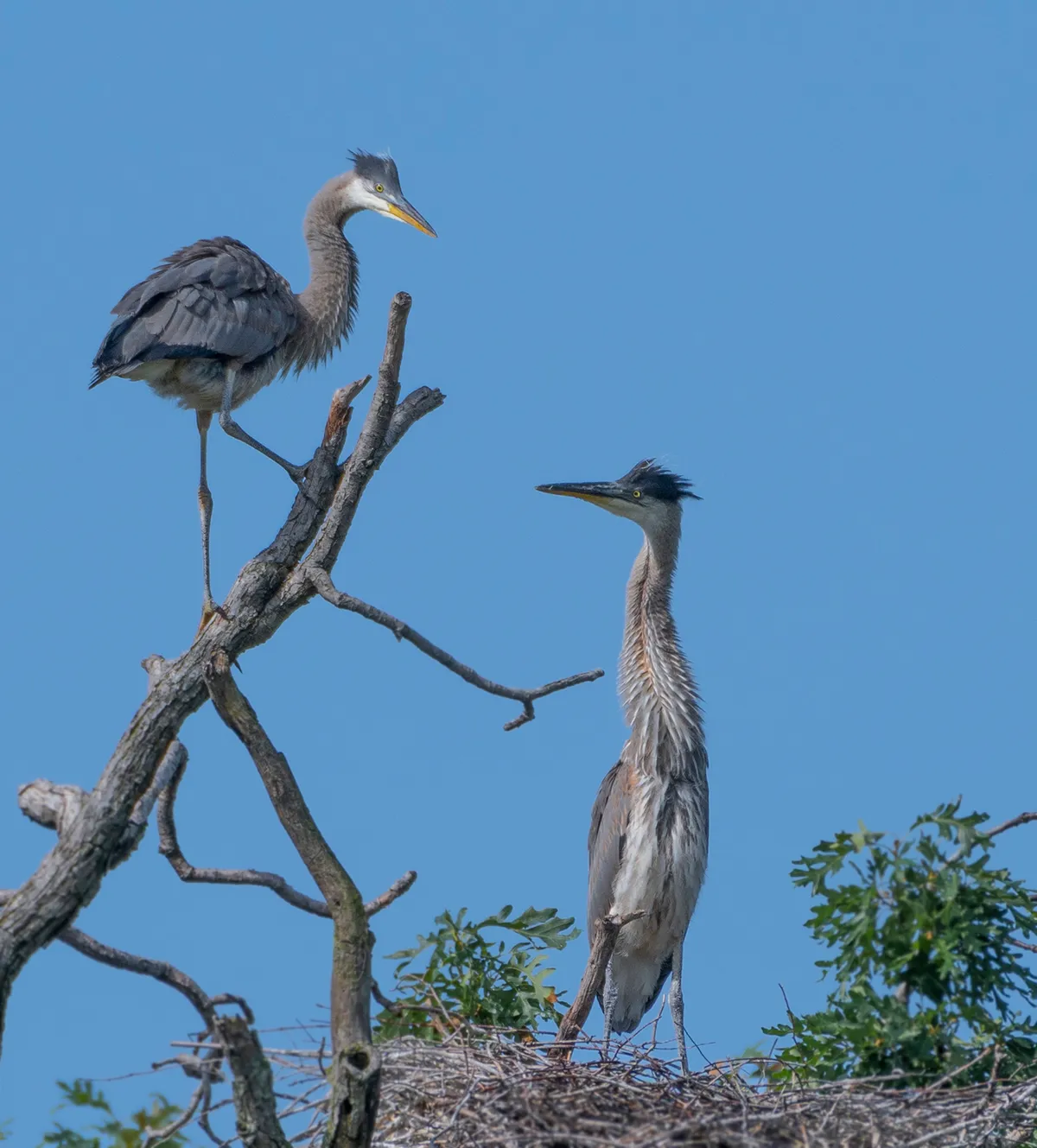
11
How do great blue herons keep cool in hot weather?
On hot days, a great blue heron can be spotted with drooped wings and an open beak. The bird will be fluttering their throat muscles to increase evaporation, an action called “gular fluttering,” an avian version of panting. The drooped wings allow air flow to help remove excess heat.
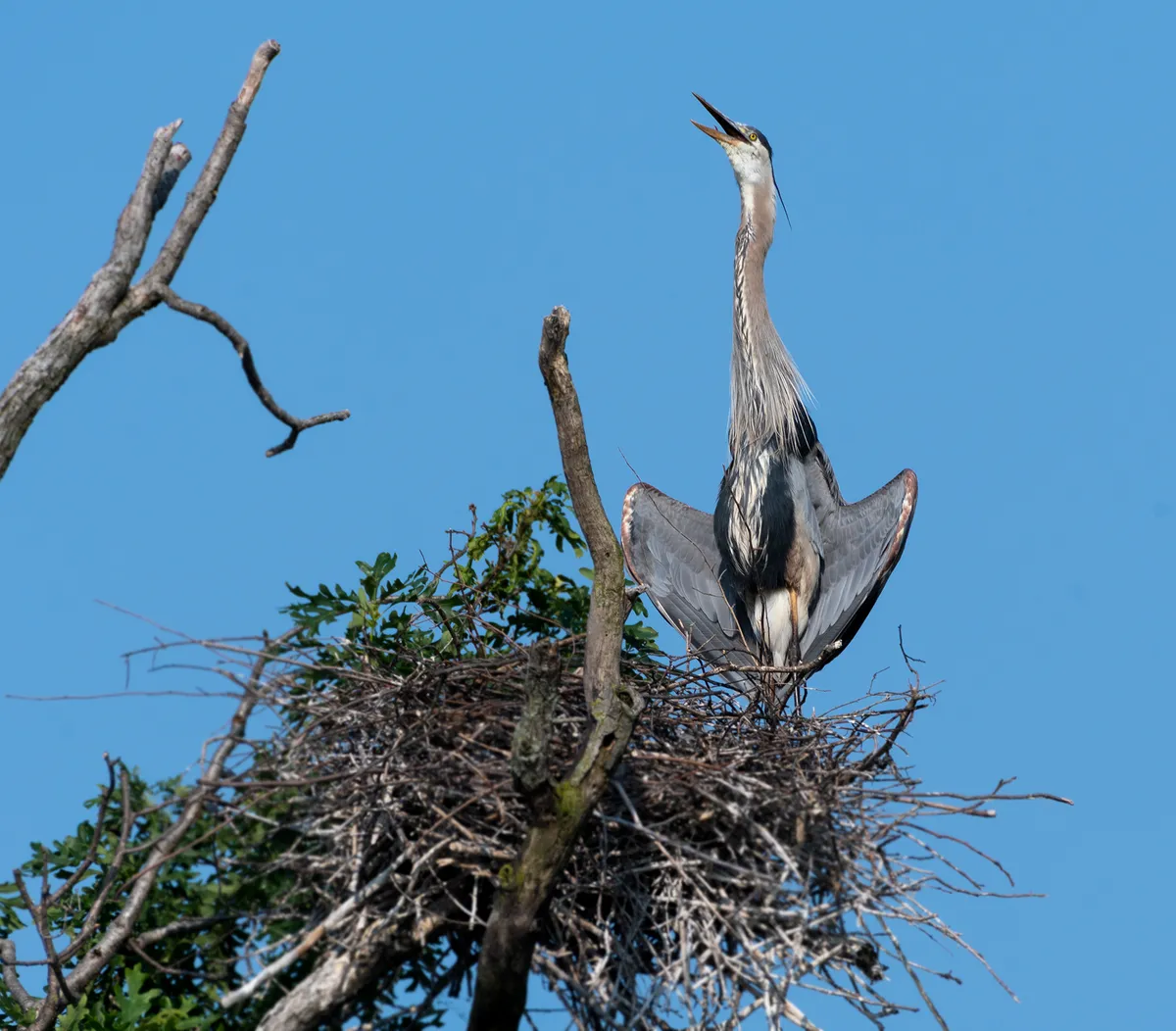
Main image: Great blue heron. © Jocelyn Anderson

